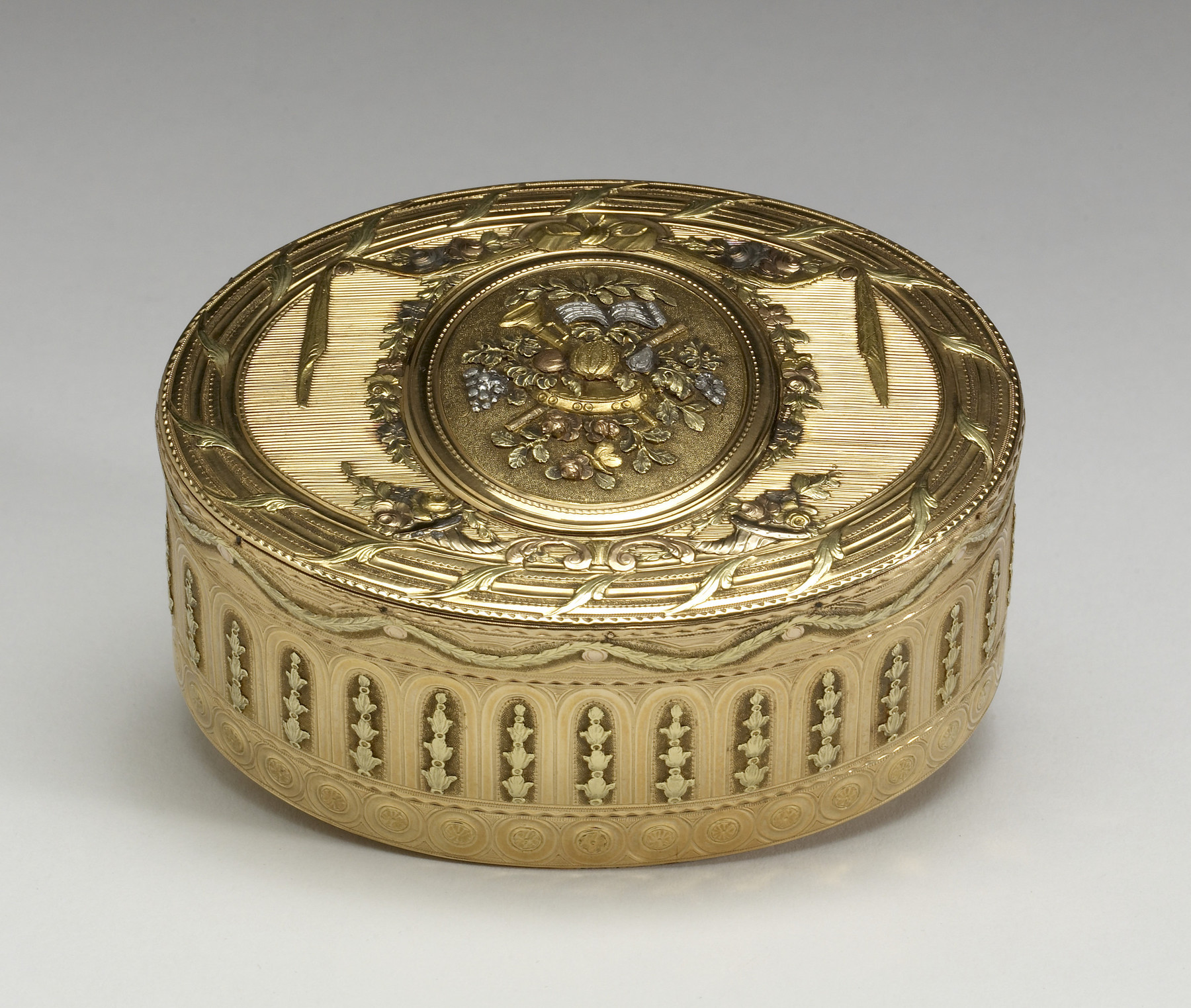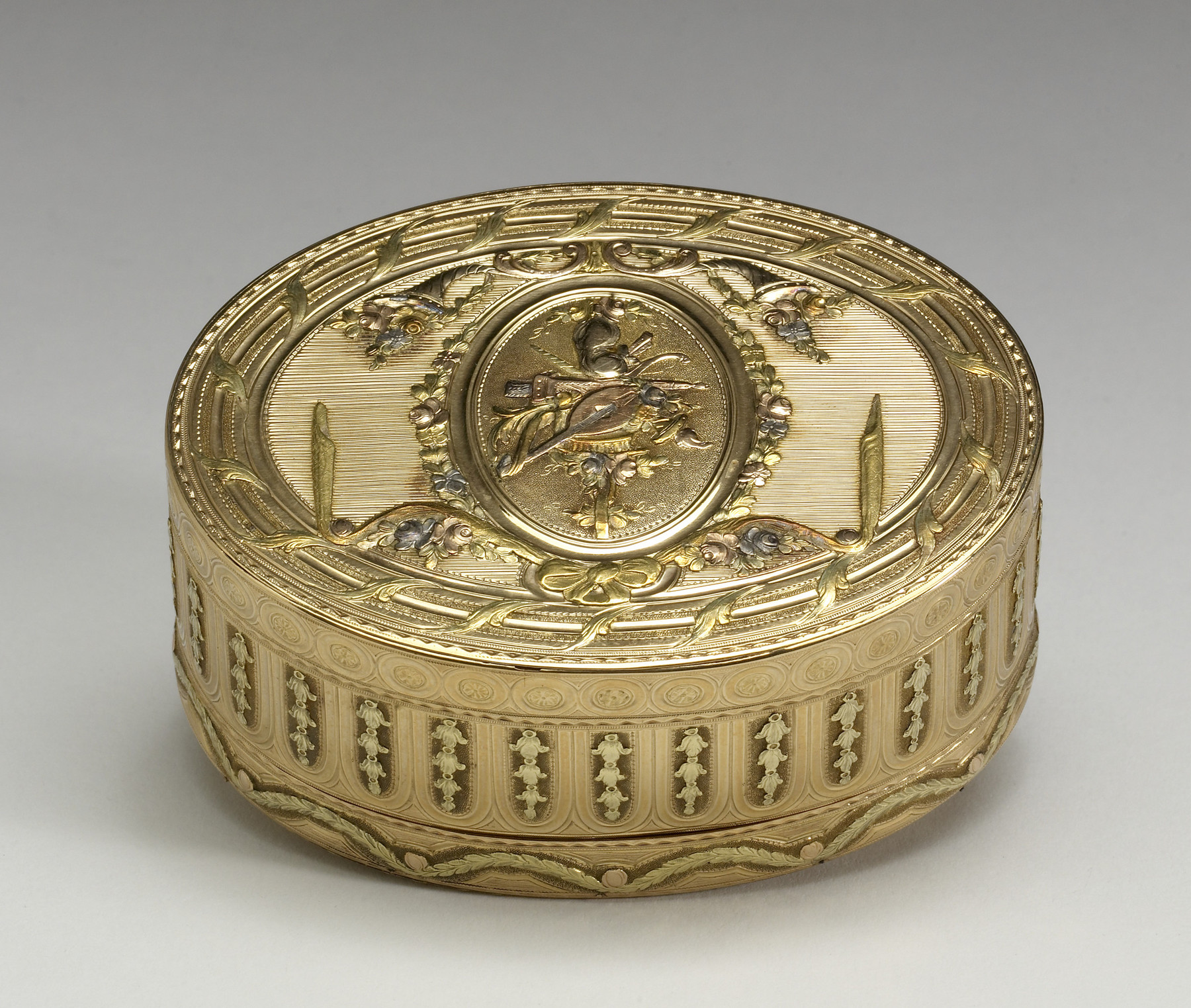Oval "Quatre-Couleur" Snuffbox
(18th and 19th Centuries )
As demonstrated by this box that originally belonged to Princess Mary, a daughter of King George III of England, the goldsmith can vary the color of gold by alloying (combining) it with other metals. The colors vary depending on the metals used. The introduction of copper results in red, silver in green, and platinum in white. This technique, which was perfected during the 18th century, is known as "quatre-couleur" (four-colored) regardless of the number of colors used.
Provenance
Provenance (from the French provenir, 'to come from/forth') is the chronology of the ownership, custody, or location of a historical object.
Princess Mary, Duchess of Gloucester and Edinburgh [1776-1857], England; by bequest to Prince George, Duke of Cambridge [1819-1904], England, 1857; Sale, Christie's, London, June 8 1904; acquired by Henry Walters, Baltimore; by bequest to Walters Art Museum, 1931.
Exhibitions
| 1984 | Objects of Vertu: Precious Works of the Eighteenth Century. The Walters Art Gallery, Baltimore. |
| 1862 | Special Exhibition of the Works of Art of the Mediaeval, Renaissance, and More Recent Periods. South Kensington Museum, London. |
Geographies
Russia, St. Petersburg (Place of Origin)
Measurements
H: 1 1/2 x W: 2 7/16 in. (3.8 x 6.2 cm)
Credit Line
Acquired by Henry Walters
Location in Museum
Not on view
Accession Number
In libraries, galleries, museums, and archives, an accession number is a unique identifier assigned to each object in the collection.
In libraries, galleries, museums, and archives, an accession number is a unique identifier assigned to each object in the collection.
57.104




